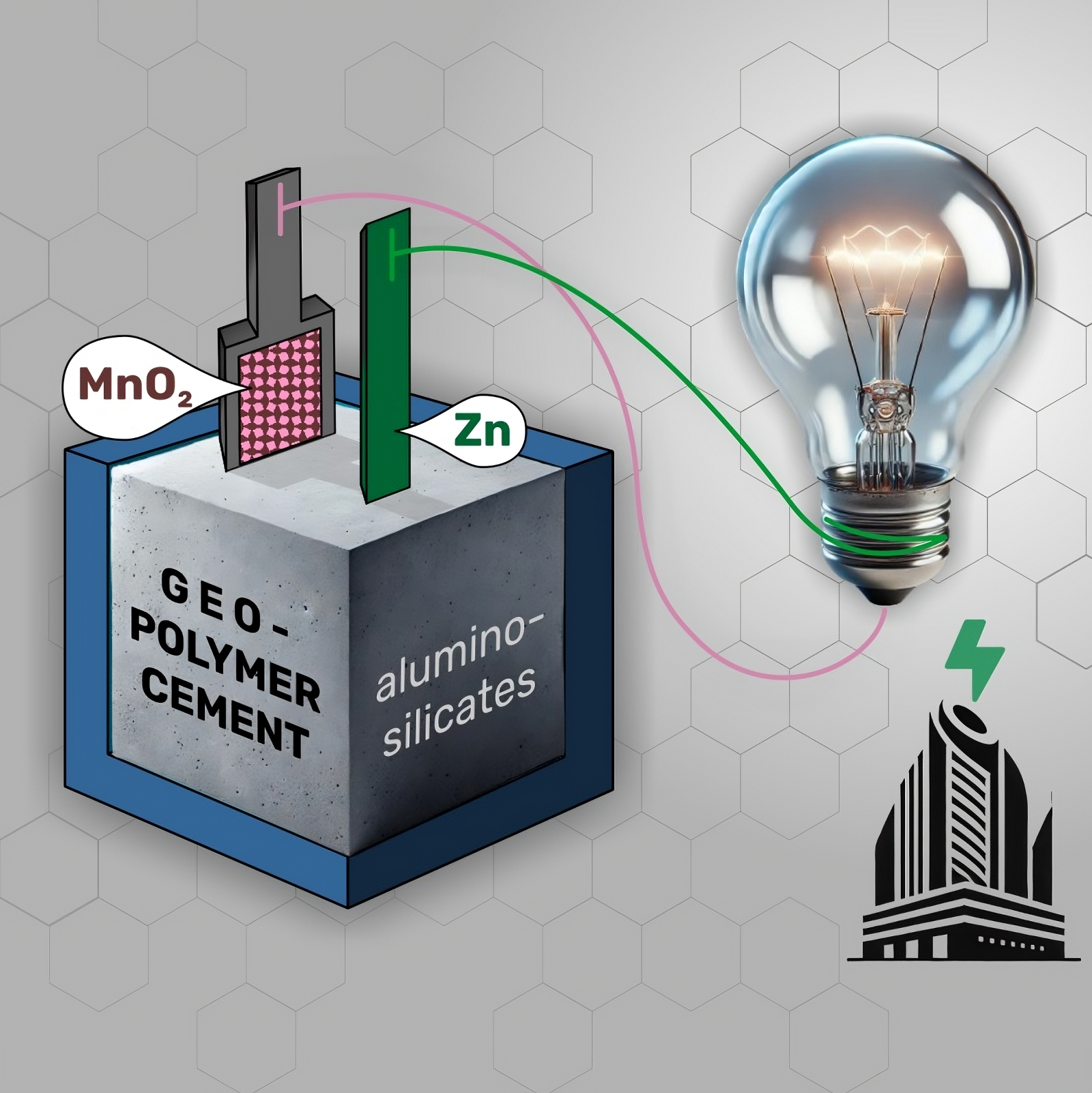Follow us on Google News (click on ☆)
With the rise of renewable energy, often intermittent, the need for stationary storage solutions is becoming crucial. While the idea of storing energy in concrete is not new, it has long remained marginal due to unsatisfactory performance, mostly limited to thermal storage.

A Zn-MnO2 electrochemical system is integrated into a solid geopolymer matrix based on metakaolin. This architecture enables energy storage and release directly from the construction material, paving the way for buildings capable of storing electricity in their walls.
© Kovrugin et al.
Inspired by geopolymers already used as an alternative to traditional cement in low-environmental-impact concrete, scientists propose a new, much more efficient electrochemical system thanks to the direct conversion of chemical energy into electricity. This device could, for example, store electricity generated by solar panels or wind turbines directly in building walls for later use.
Researchers from the Institute of Condensed Matter Chemistry of Bordeaux (CNRS/University of Bordeaux/Bordeaux INP), in collaboration with Spain's Centro de Física de Materiales, have made a major breakthrough by designing a solid-state battery with an electrolyte made of a metakaolin-based geopolymer—an aluminosilicate inorganic polymer obtained by calcining clays. Known for its excellent mechanical properties, this geopolymer is an eco-friendly alternative to ordinary Portland cement as a concrete binder, as its production emits far less CO₂.
The rechargeable battery developed by the team is a Zn-ion battery that uses this geopolymer matrix as an electrolyte separating conventional electrodes: zinc for the negative electrode and manganese dioxide for the positive electrode. Activated by a zinc sulfate solution, the porous matrix contains a residual liquid phase that ensures the transport of Zn2+ ions from one electrode to the other.
The result? An energy density of 3.3 Wh/L, four times higher than that (0.8 Wh/L) measured in traditional Portland cement-based devices. Admittedly, this density is much lower than that of conventional Li-ion batteries (~570 Wh/L). But here, storage is integrated into the very volume of the structure, which largely compensates for the lower density.
Still at an early fundamental stage, several technical challenges remain, such as improving the stability of zinc electrodes and enhancing the mechanical properties of the solid electrolyte. But these hurdles seem surmountable given the rapid advances in aqueous Zn-ion batteries and the growing applications of geopolymers in the construction sector.
In the long run, this new concept, published in Materials Horizons, could support the development of energy-positive buildings, where walls themselves store the electricity produced on-site. Could the energy of the future be hidden in tomorrow's bricks?